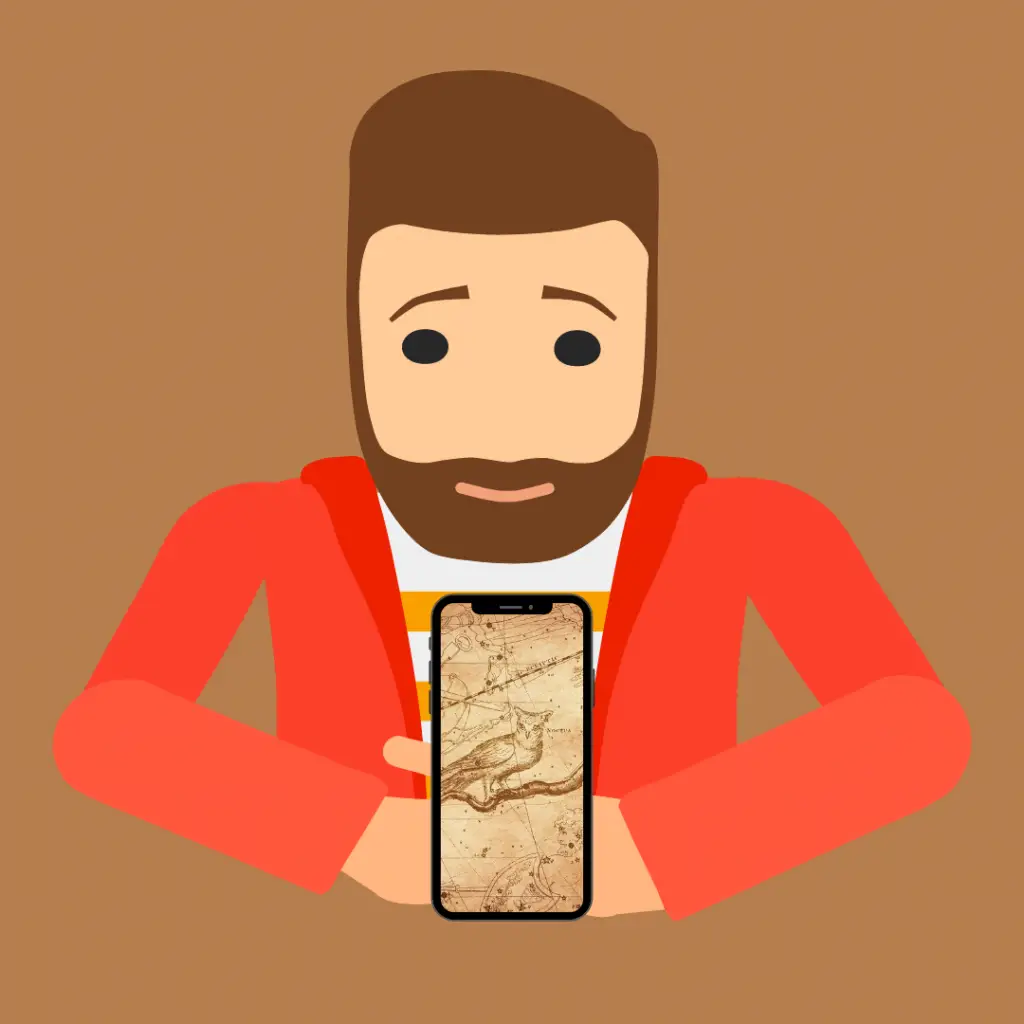In the year 140 A.D the ancient astronomer Ptolemy published ‘The Almagest’ in which he identified 48 constellations.
The Ancient Romans loved gazing at the night sky and tied many of their myths to the stars.
There are many lessons to be learned from the stars including the power of love, friendship, family, and loyalty.
This article contains a list of all 48 Roman constellations as well as some detail about the fascinating stories and mythology associated with 3 of our favorites.
A Complete List of Roman Constellations
- Andromeda, ‘Andromeda’ or ‘The Chained Princess’
- Aquarius, ‘The Water Bearer’
- Aquila, ‘The Eagle’
- Ara, ‘The Altar’
- Argo Navis, ‘The Argonauts Ship’
- Aries, ‘The Ram’
- Auriga, ‘The Charioteer’
- Boötes, ‘The Herdsman’
- Cancer, ‘The Crab’
- Canis Major, ‘The Great Dog’
- Canis Mino, ‘The Little Dog’
- Capricornus, ‘The Sea Goat’
- Cassiopeia, ‘Cassiopeia’ or ‘The Queen’
- Centaurus, ‘The Centaur’
- Cepheus, ‘The King’
- Cetus, ‘The Whale’ or ‘The Sea Monster’
- Corona Australis, ‘The Southern Crown’
- Corona Borealis, ‘The Northern Crown’
- Corvus, ‘The Crow’
- Crater, ‘The Cup’
- Cygnus, ‘The Swan’
- Delphinus, ‘The Dolphin’
- Draco, ‘The Dragon’
- Equuleus, ‘The Little Horse’
- Eridanus, ‘The River’
- Gemini, ‘The Twins’
- Hercules, ‘Hercules’
- Hydra, ‘The Hydra’
- Leo Major, ‘The Lion’
- Lepus, ‘The Hare’
- Libra, ‘The Balance’ or ‘The Scales’
- Lupus, ‘The Wolf’
- Lyra, ‘The Lyre’
- Ophiuchus or Serpentarius, ‘The Serpent Bearer’
- Orion, ‘The Hunter’
- Pegasus, ‘The Winged Horse’
- Perseus, ‘Perseus’ or ‘The Hero’
- Pisces, ‘The Fishes’
- Piscis Austrinus, ‘The Southern Fish’
- Sagitta, ‘The Arrow’
- Sagittarius, ‘The Archer’
- Scorpius, ‘The Scorpion’
- Serpens Caput, ‘The Serpens Head’ and Serpens Cauda, ‘The Serpent’s Tail’
- Taurus, ‘The Bull’
- Triangulum, ‘The Triangle’
- Ursa Major, ‘The Great Bear’
- Ursa Minor, ‘The Little Bear’
- Virgo, ‘The Virgin’
Andromeda
Today the Andromeda constellation is known as the Andromeda Nebula or Messier 31.
It is located 2.5 million light-years away from Earth and is classified as a spiral bar galaxy – meaning it features a swirl of space dust surrounding a central bar of bright light, like the Milky Way.
The Andromeda constellation is one of the furthest galaxies that can be seen with the naked eye on very dark nights around fall in the Northern Hemisphere.
The story of Andromeda is bittersweet.
The Princess Andromeda’s parents were King Cepheus and Queen Cassiopeia of Ethiopia. Cassiopeia enraged the sea god Poseidon by boasting that her daughter was just as beautiful as his sea nymphs.
To punish her, Poseidon sent the monster Cetus to destroy their kingdom.
To save their lands, the king and queen chained Andromeda to a rock as a sacrifice to Cetus.
Luckily, the demigod Perseus happened upon her on his way home from slaying the snake-haired gorgon Medusa.
He fell in love with the beautiful Andromeda, killed Cetus, and returned the princess to her relieved parents.
Despite his bravery, Perseus could not marry Andromeda as she was promised to another man – Phineus.
Perseus turned Phineus to stone by brandishing the severed head of Medusa and so got to marry his princess.
After their deaths, Andromeda and Perseus were immortalized in the stars where the two lovers, and the sea monster, can still be seen today.
Cygnus
The Cygnus constellation can be seen in the Northern Hemisphere from mid-summer to the end of September.
It is a distinctive cross-shaped constellation which got its name from Latinizing the Greek word for swan.
You can find Cygnus where it flies south along the length of the Milky Way, neatly contained within the three stars of the Summer Triangle.
There are many stories about Cygnus, the most popular describes how Zeus transformed himself into a beautiful swan to successfully trick beautiful Queen Leda into loving him.
Another story is of two friends, Cygnus and Phaethon, who were racing chariots across the sky.
Their chariots began to melt as they strayed too close to the sun, and they fell towards the earth.
Cygnus landed in some trees and was saved, but Phaethon crashed into a river and sank beneath the current.
Cygnus could not swim, so implored Zeus to turn him into a swan so he could dive beneath the surface and save his friend.
Zeus was touched by such a display of friendship and granted Cygnus his wish.
Cygnus dove into the river and retrieved his friend, saving his life.
Zeus commemorated this display of friendship by immortalizing Cygnus in the sky forever.
The tale of Cygnus and Phaethon reminds us of the importance of friendship, and that loyalty and bravery are rewarded.
This constellation is easy to spot and makes a great early introduction to stargazing.
Gemini
The Gemini constellation contains two half-brothers: Castor, the mortal son of King Tyndarus, and Pollux, immortal son of Zeus.
They were almost identical but could be differentiated in battle by their skills as Castor was a great rider, and Pollux a skilled fighter.
These twins are remembered for their service on the great Argo, a ship sailed by Jason through a terrible storm.
Tragically, Castor was killed in battle and being mortal, died never to return to Earth.
His heartbroken twin Pollux begged his father Zeus to bring his brother back.
Eventually, Zeus agreed and both brothers became immortal demigods.
But – there was a catch. Both twins were bound forevermore to spend half of their time on Earth, and half amongst the stars.
For thousands of years sailors have looked for the twins in the sky – when both stars are visible the journey will be prosperous, but only one star promises misfortune.
Gemini can be found close to the Orion constellation from January through to the end of May in the Northern Hemisphere.
Over the past 1000 years the chief star in the Pollux formation has been growing brighter and brighter – maybe the twins are on their way home?
Conclusion
Roman mythology can be beautiful, wholesome, but brutal.
There are countless stories associated with dozens of constellations, many of which we still talk about to this day.
Learning to identify constellations, and learning their stories, provide life lessons that are as significant today as they were thousands of years ago.
You might also like:
- Constellations For Agriculture
- 6 Obscure Constellations Few People Know
- Egyptian Constellations (List and Stories)
- Roman Constellations (List and Stories)
- Female Constellations (List and Stories)
- Best Free Stargazing App Options
- Comets and Meteors (Compared)
- Are Comets Bigger Than Asteroids?
- Best Constellations Everyone Should Know







